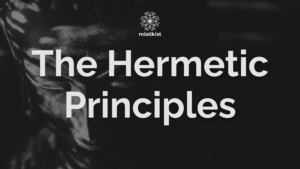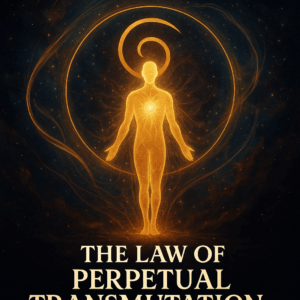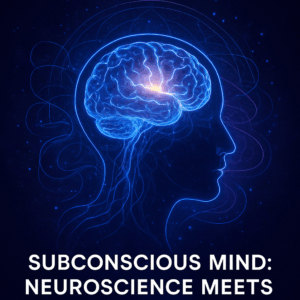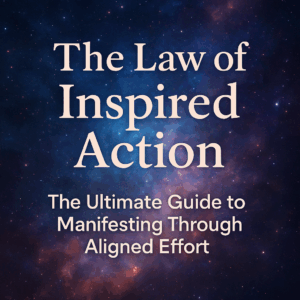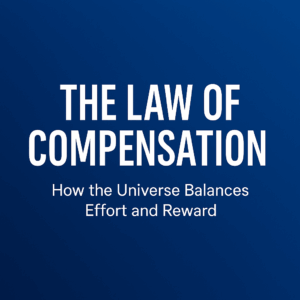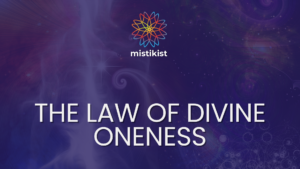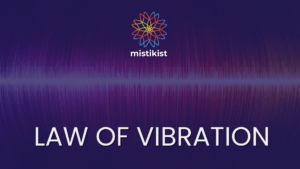Why Thought Alone Isn’t Enough
You’ve visualized your dreams. You’ve written affirmations. You’ve meditated on your goals. Yet, somehow, they still feel out of reach.
What’s missing?
Action.
But not just any action—inspired action: the kind that feels effortless, exciting, and perfectly aligned with your deepest desires.
The Law of Inspired Action is the bridge between dreaming and reality, the missing link in manifestation that most people overlook. It’s not about grinding through to-do lists or forcing yourself to “hustle.” It’s about following the quiet (or sometimes loud) nudges from your intuition—the ones that pull you toward opportunities, people, and ideas that light you up.
In this comprehensive guide, we’ll explore:
-
The true meaning of the Law of Inspired Action (and how it differs from “hard work”)
-
Its origins in ancient wisdom and modern spirituality
-
How it connects to other Universal Laws (like the Law of Attraction and Cause & Effect)
-
Scientific and psychological backing (why inspired action works better than forced effort)
-
Real-life examples (from business to relationships to personal growth)
-
Step-by-step application (how to recognize and act on inspiration)
-
Common mistakes (why most people fail at this law without realizing it)
-
Wisdom from top teachers (Abraham-Hicks, Wayne Dyer, and modern coaches)
By the end, you’ll know exactly how to move from wishing to creating—effortlessly.
What Is the Law of Inspired Action?
Definition
The Law of Inspired Action states that true manifestation requires more than thought or intention—you must take action guided by intuition, passion, or inner knowing.
Unlike forced effort (doing something because you “should”), inspired action:
-
Feels exciting, even if challenging
-
Comes from a deep sense of “rightness”
-
Often arrives as a sudden idea or gut feeling
-
Creates momentum rather than burnout
As HelloMyYoga explains:
Inspired action is acting from a place of genuine passion, purpose, or inner guidance. When you act this way, you’re more likely to achieve success, fulfillment, and positive outcomes.
Why It’s Different from “Just Taking Action”
Many people believe any action counts toward their goals. But the Law of Inspired Action emphasizes quality over quantity.
-
❌ Forced action = Doing things out of obligation, fear, or societal pressure (e.g., working a job you hate because it’s “safe”).
-
✅ Inspired action = Acting because something inside you says “This is the way” (e.g., starting a side hustle that excites you, even if it’s risky).
Example:
-
Forced action: Going to the gym because you “have to” (and dreading it).
-
Inspired action: Trying a dance class on a whim—and loving it so much you keep going.
Origins & Spiritual Significance
Roots in Ancient Wisdom
While the term “Law of Inspired Action” is modern, the concept appears in many ancient traditions:
-
Hermeticism (Egyptian/Greek philosophy) – The idea that “as above, so below” implies alignment between thought and action.
-
Hawaiian Huna – The principle of “Makia” (energy flows where attention goes) emphasizes focused action.
-
Taoism – The concept of “Wu Wei” (effortless action) mirrors inspired action.
Connection to the 12 Universal Laws
The Law of Inspired Action is often grouped with other Universal Laws, such as:
-
Law of Attraction – Like attracts like (set the intention).
-
Law of Cause & Effect – Every action has a consequence (take the right actions).
-
Law of Compensation – You reap what you sow (inspired efforts bring greater rewards).
As MindBodyGreen notes:
The Law of Inspired Action takes the Laws of Attraction and Vibration further by insisting on real-world effort—not just wishful thinking.
Inspired Action vs. Other Types of Effort
1. Inspired Action vs. Motivated Action
-
Motivated action comes from external pushes (e.g., “I need to make money”).
-
Inspired action comes from internal pulls (e.g., “I feel called to write this book”).
2. Inspired Action vs. Forced Action
-
Forced action feels heavy, draining, and obligatory.
-
Inspired action feels light, exciting, and aligned.
Abraham-Hicks explains:
“Action from alignment is joyful. Action from contradiction is hard work with little reward.”
3. Inspired Action vs. Procrastination
-
Procrastination = Avoiding action out of fear or resistance.
-
Inspired action = Acting when the timing feels right (not just waiting forever).
Scientific & Psychological Backing
1. Intrinsic Motivation (Psychology)
Research shows that intrinsic motivation (doing something because it’s inherently rewarding) leads to:
-
Greater persistence
-
Higher creativity
-
More fulfillment
Inspired action aligns perfectly with this—it’s doing things because they feel meaningful.
2. Flow State (Mihaly Csikszentmihalyi)
The flow state (being “in the zone”) happens when:
-
Challenge meets skill
-
Action feels effortless
-
Time seems to disappear
This mirrors inspired action—when you’re acting on intuition, you enter flow naturally.
3. Neuroscience of Intuition
Studies on rapid cognition (Malcolm Gladwell’s Blink) show that:
-
The subconscious processes information faster than the conscious mind.
-
Gut feelings are often pattern recognition from past experiences.
When you act on inspiration, you’re trusting your brain’s hidden wisdom.
Real-Life Examples
1. Career & Business
-
Forced path: Staying in a corporate job you hate because it’s “secure.”
-
Inspired path: Quitting to start a business after a sudden, exciting idea.
2. Relationships
-
Forced action: Swiping endlessly on dating apps with no real connection.
-
Inspired action: Joining a hobby group where you naturally meet like-minded people.
3. Health & Fitness
-
Forced action: Forcing yourself to run on a treadmill (and hating it).
-
Inspired action: Trying rock climbing and loving it so much it doesn’t feel like exercise.
How to Apply the Law of Inspired Action
Step 1: Get Ultra-Clear on Your Desire
-
Write it down in detail.
-
Visualize it daily.
Step 2: Cultivate Inspiration
-
Meditate.
-
Spend time in nature.
-
Consume uplifting content.
Step 3: Listen for Intuitive Nudges
-
Sudden ideas.
-
Gut feelings.
-
Synchronicities (repeated signs).
Step 4: Act Immediately (No Overthinking)
-
Even small steps count.
-
Momentum builds quickly.
Step 5: Trust & Let Go
-
Do your part, then release attachment to how it unfolds.
Common Mistakes
❌ Waiting for “perfect” conditions (inspiration often comes with some fear).
❌ Confusing busywork with progress (not all action is equal).
❌ Ignoring small nudges (big opportunities start with small steps).
Wisdom from Teachers
-
Abraham-Hicks: “Inspired action feels light and joyful.”
-
Wayne Dyer: “Act as if it’s already yours.”
-
Nikki Gundy: “Alignment leads to effortless action.”
Summary
The Law of Inspired Action is the secret sauce of manifestation. When you stop forcing and start following your inner guidance, life unfolds with surprising ease.
Your turn: What’s one inspired action you’ve been ignoring? Take it today.
Follow Mistikist on Instagram



